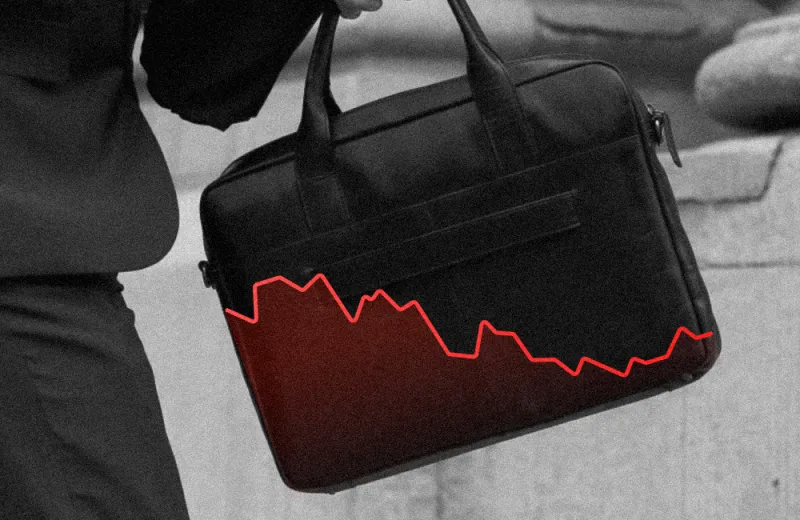As investors continue to move money from public to private markets, some investment professionals are issuing a warning: manage your expectations.
Since the advent of leveraged buyouts decades ago, investors have allocated more and more capital to private markets, garnering outsized returns from their investments for a variety of reasons. Amid a downturn in public markets and a possible recession, increasing inflation, and geopolitical uncertainty, institutional investors are leaning even more into their private market allocations.
But Nathan Shetty, head of Nuveen’s multi-asset team, warns that private equity and other illiquid assets aren’t a “cure-all or panacea” for lower expected returns in the public markets. Nuveen offers both traditional and alternative investments, including fixed income, equities, real estate, and real assets. The manager has $1.1 trillion in assets, $80 billion of which are in private investments.
In an interview with Institutional Investor, Shetty said institutional investors right now see private markets as a safety net from other market headwinds — namely higher risk and volatility — hitting their portfolios. This assumption comes from the private market’s higher risk-higher reward profile and the asset class’s “illiquidity premium” — the extra money investors theoretically make for locking up their capital and giving up the ability to buy or sell assets easily. Private assets, which are valued quarterly instead of in real-time like stocks, also appear more stable — at least in the short term.
“I’m nervous there is going to be a mismatch in expectations between what institutions expect out of private allocations and what private allocations ultimately can arithmetically deliver,” Shetty told II.
Investors often expect more than the market realistically can provide. Shetty said decades ago the antidote for market turbulence was the hedge fund, which investors expected to deliver double-digit returns that were also uncorrelated with other asset classes. But inflows and market forces changed the equation. During the 2000s, what’s often called the golden age of hedge funds, these alternatives returned 6 percent on an annualized basis, even as the S&P 500 lost 1 percent over the decade. The stellar performance record of hedge funds then attracted record inflows from investors wanting in on those gains. But during the 2010s, hedge funds only returned 4 percent annually, the result of all that cash plus a decade where a simple portfolio of stocks and bonds returned 7 percent.
“It was an undue expectation and the hedge funds just couldn’t deliver on that,” Shetty said. “We don’t want to run into a situation where, if there’s a mismatch in expectations people question the efficacy or legitimacy of private markets in portfolios.”
Institutional investments in private markets is higher than it’s ever been, said Scott Gockowski, a senior manager at strategic consultant Casey Quirk, which is part of Deloitte. Losses in public markets are partly to blame. By the end of the second quarter, institutions suffered significant losses on public securities, causing them to be overweight in their allocations to private markets. Here, institutions had to make a decision: Do they sell some private investments in the secondary market to get back in balance or leave their portfolios alone. According to Gockowski, the majority of investors just ran with their new allocations.
But Gockowski said it makes sense to question the future risk-return profile of private assets, now that the sector has been flooded with cash. “I think it’ll be interesting to see whether the differential in public and private market performance persists,” Gockowski told II.
The data show investors moving into the private markets because they believe they will outperform the public markets in the near future. In a CoreData Research survey of 130 European fund selectors in June 2022, 27 percent of respondents said their firms are shifting their investment focus from public to private markets; 31 percent said they think private markets will consistently outperform public markets going forward.
Jeffrey Diehl, managing partner and head of investments at Adams Street Partners, a private markets investment manager with over $50 billion in assets under management, said the majority of his clients have either upped their asset allocation to private market investments or kept them flat in the past few years.
“I can’t think of one that’s actually taking it down,” Diehl told II. “The only reason someone might take it down is if they feel they need to become more liquid.”
Diehl said there’s no question that the institutional investor community expects the private markets to continue to outperform the broader market, a position he backs. The assumption that private markets will act as a bandaid for lower expected returns might come from a few factors. One driver is the way private companies are governed: owners have more control over operations and strategy than shareholders in a public company. Diehl argues there is more alignment of interests between private company owners and upper level management.
Diehl said another reason could be that the “innovator’s dilemma” is hard to execute at a public company. This happens when companies see a shift in the way their customers are operating and invest in their operations or products to keep up. Public companies that put more money into research and development or other initiatives to shift direction need their shareholders to sit tight when their stock prices fall in response to higher expenses. But private companies don’t have to answer to a public stock market and innovation can happen at a faster rate — at least theoretically. Private companies often have an advantage over public peers, an attractive quality for investors looking to cushion their portfolios.
But to avoid disappointment, managers need to be realistic with their investors.
“We try to manage people’s expectations, so that’s why I don’t get the sense that anyone in our client base is being too rosy about things,” Diehl said.







